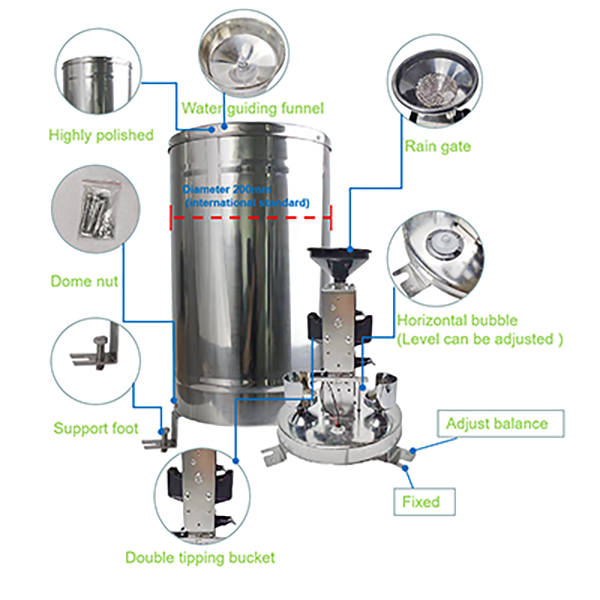Introduction
As our world grapples with the growing impacts of climate change, accurate weather monitoring has become more crucial than ever. Among the various meteorological instruments, rain gauges have seen significant advancements, enhancing their functionality, accuracy, and applications in various sectors. This article explores the latest developments in rain gauge technology, highlighting their features and diverse applications in environmental management, agriculture, and urban planning.
Latest Developments in Rain Gauge Technology
In late 2024, several innovative rain gauge models have been launched, combining cutting-edge technology with user-friendly features. Key advancements include:
-
Smart Connectivity: Modern rain gauges now come equipped with IoT (Internet of Things) capabilities, allowing real-time data transmission to mobile apps or cloud platforms. This feature enables users to access historical and current rainfall data remotely, facilitating better decision-making.
-
Enhanced Accuracy: Recent models incorporate advanced sensors and ultrasound technology to minimize errors caused by wind and evaporation. These upgrades have greatly improved the measurement accuracy, making them reliable for both casual users and professionals.
-
Automatic Calibration: Newer rain gauges offer self-calibrating functions, which ensure accurate readings over time without manual intervention. This is particularly beneficial for environments where conditions frequently change, such as urban areas and agricultural fields.
-
Multi-Parameter Monitoring: Some advanced rain gauges now measure additional meteorological parameters, such as temperature, humidity, and atmospheric pressure. This multi-parameter data collection provides a comprehensive view of weather conditions, enhancing the understanding of precipitation patterns.
-
Durable and Sustainable Design: Many of the latest gauges are made from environmentally friendly materials and are designed to withstand harsh weather conditions, making them more durable and cost-effective over time.
Applications of Rain Gauges
Rain gauges play a pivotal role in various sectors, from agriculture to disaster management. Here are some of the notable applications:
-
Agriculture: Farmers can utilize rain gauges to make informed irrigation decisions. By monitoring rainfall accurately, they can optimize water usage, conserve resources, and improve crop yields. The data also helps in predicting droughts or heavy rainfall events, aiding in proactive management.
-
Urban Planning and Management: In urban areas, rain gauges are crucial for stormwater management. Monitoring rainfall patterns helps city planners design better drainage systems, reducing the risk of flooding and improving public safety. Furthermore, the data collected can inform infrastructure development to mitigate the impacts of heavy rainfall.
-
Climate Research: Meteorologists and environmental scientists rely on data from rain gauges to study climate patterns and changes. Precise rainfall data is instrumental in climate modeling, contributing to a deeper understanding of climate variability and extreme weather events.
-
Water Resource Management: Water authorities and environmental agencies use rain gauge data to monitor watershed health and manage water resources more efficiently. This is vital in regions prone to drought, ensuring sustainable water supply and conservation practices.
-
Flood Forecasting and Early Warning Systems: Accurate and timely rainfall data from rain gauges are critical for flood forecasting. By integrating rain gauge data into early warning systems, authorities can issue alerts to communities at risk, helping to save lives and property.
Conclusion
As we move into an era increasingly defined by climate uncertainty, the importance of reliable weather monitoring, particularly through rain gauges, cannot be overstated. The latest advancements in rain gauge technology, including smart connectivity, enhanced accuracy, and multi-parameter capabilities, position these instruments as essential tools in a wide range of applications. From agriculture to urban management and climate research, modern rain gauges are not just measuring precipitation; they are providing the data necessary for sustainable practices and informed decision-making in our rapidly changing environment.
With ongoing innovations in technology, the future of rain gauges looks promising, and their role in climate monitoring and resource management will only grow more significant in the years to come.
Post time: Dec-31-2024


